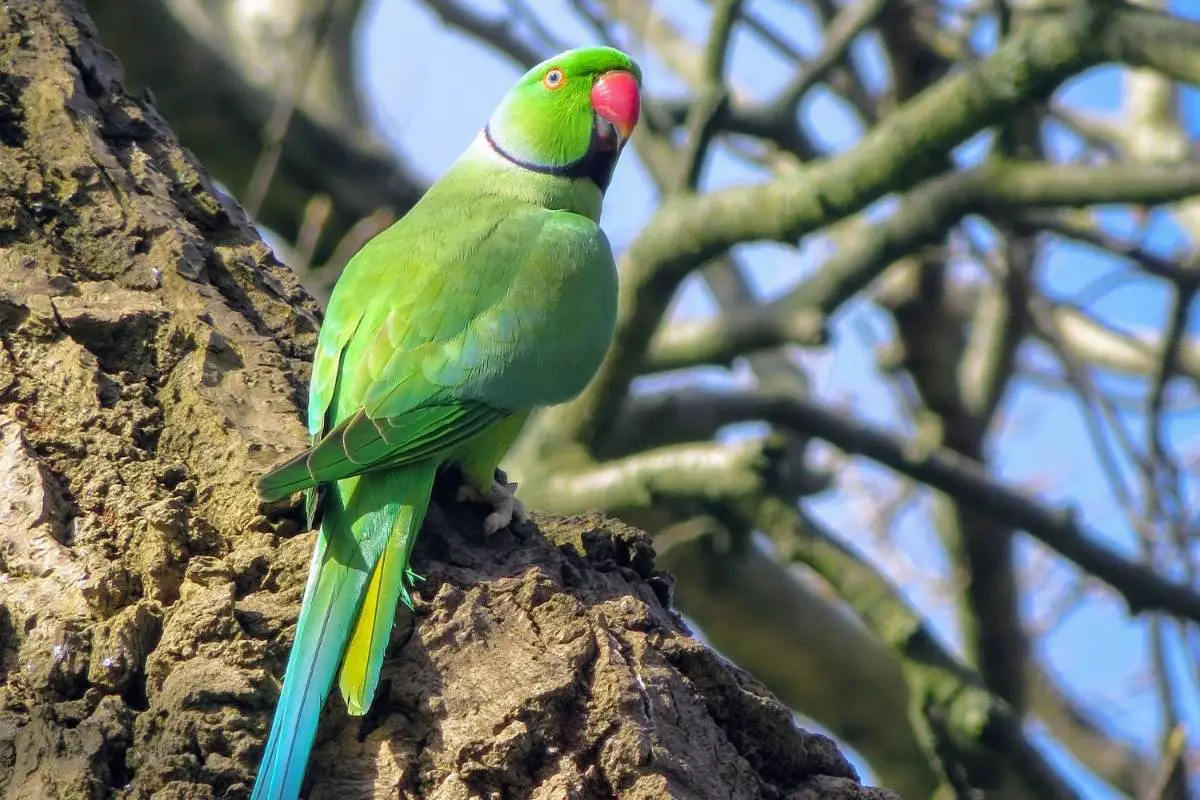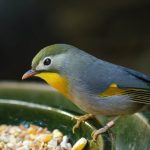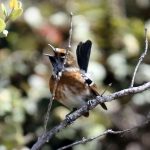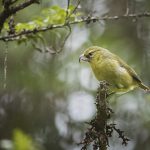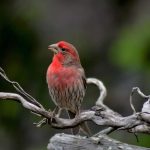Common Name: Rose-ringed Parakeet
Scientific Name: Psittacula krameri| Size | Diet | Range in Hawaii | Status in Hawaii |
|---|---|---|---|
| 16 inches | buds, fruits, vegetables, nuts, berries, and seeds | Hawaiian Islands | least concern |
The Rose-ringed parakeet is one of the many common and well-liked pets people keep in their homes. Due to its sharp mind, this bird is a beloved pet. It can be taught to talk and perform complex tasks.
As you read on, we will give you full information about this bird species, as well as some interesting information about them.
Rose-ringed parakeet
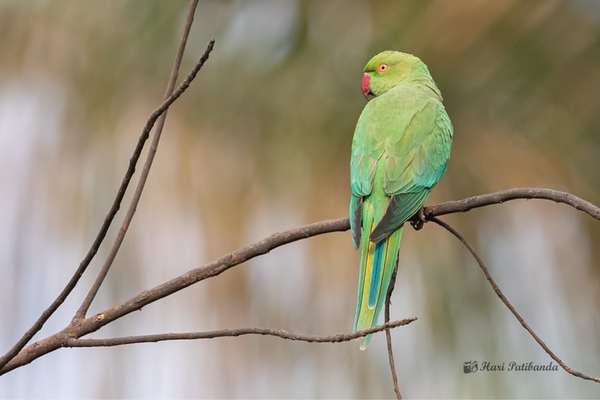
Scientific Name: Psittacula krameri
Appearance
The rose-ringed parakeet is a medium-sized bird found in Hawaii. They’re 38.1 cm long on average but can grow to be 42 cm long.
Although both sexes of this species have an emerald green color, there are distinct differences between males and females. Males have a dark purplish color on their necks that females don’t have.
Juveniles are the same color as females, but much yellower and lack the dark color on their necks. Once they reach sexual maturity, the coloring on their necks will start to show on males.
Diet
Rose-ringed parakeets are granivores who consume a wide variety of foods. Seeds and grains such as millet, rice, and wheat account for 80 percent of its diet. These birds also enjoy eating nuts and fruits such as almonds, cashews, apples, walnuts, and macadamia nuts.
They’ll even go to gardens and farmlands in search of bird feeders. When given a chance, these birds will feed on a variety of small insects found in their natural habitat.
Behavioral traits
The Rose-ringed parakeet, also known as the ring-necked parakeet, is a bird that originated in India and Africa. It’s one of the most common birds in captivity and has long been kept as a pet.
The rose-ringed parakeet is a naturally social bird, so these parakeets are always happiest when they can interact with other parakeets. They can also be kept as a single bird in an aviary or cage if there is enough space for them to spread out on multiple perches.
During the day, these species can be seen searching for food and flying around their natural habitat. Rose-ringed parakeets are very vocal birds, and they’ll respond to your voice by making their own noises.
Breeding
The females are the ones who attract the males during courtship by repeatedly rubbing their heads against the males. Every breeding season, they’ll also switch from one partner to another. In the wild, the females also build their nests in the holes of various trees. If they’re found in urban areas, these birds may do the same on the roof or in wall crevices.
Every breeding season, they lay 1-7 eggs, which they incubate for an average of 3 weeks. These newly hatched chicks will be completely dependent on the female until they fledge in 7 weeks. They become independent after two years and leave their nest to find and build their own, as well as to breed with other members of their own species.
Habitat

This species prefers open woodland, groves, parks, and gardens with a high concentration of trees and shrubs. They prefer these areas because there is a plentiful supply of food for them, such as seeds, nuts, grains, and fruits. The trees will also provide them with a place to hide from predators, especially at night.
Native
The Rose-ringed parakeet is native to the Indian subcontinent, which includes India, Pakistan, and Bangladesh. The parakeet was also introduced to Europe, and it has since spread to other parts of the world. The birds are thought to have been domesticated as pets in India, but they either escaped or were intentionally released.
Hawaii
These birds were brought to Hawaii as pets in the 1960s. They were originally kept as pets on private properties, but they eventually escaped and began breeding outside of captivity.
As of today, these species are considered a threat to Hawaii agriculture because they feed on a wide variety of grains and fruits, which can be challenging for many gardeners. They can also be found on every Hawaiian island.
Conservation Status
Rose-ringed parakeets aren’t endangered, and the IUCN considers them as least concern. This means that their populations are stable and growing, and they’re not threatened. In fact, they’re regarded as one of the world’s most invasive parakeets.
Interesting facts
1. Known for mimicking human speech
Rose-ringed parakeets are highly social and intelligent birds. They can learn a vocabulary of up to 250 words and use it to communicate with other birds and humans. Their intelligence enables them to imitate the sounds they hear.
2. This species can reach up to 30 years of age
Rose-ringed parakeets live for about 15 to 20 years on average. However, this species can live up to 30 years if given the right conditions and diet.
3. They’re seen as status symbols
For centuries, the Rose-ringed parakeet has been regarded as a status symbol in India, where it has been imported and bred in captivity.
4. They’re smart birds
Rose-ringed parakeets are among the most intelligent birds on the planet, capable of learning complex tasks. It can be trained to say words and phrases, solve puzzles and problems, and even use tools. Parakeets are also known for their curiosity and playfulness, making them ideal pets for children.
Frequently asked questions:
Are rose-ringed parakeets invasive?
Since they eat native plants and compete with native birds for food and nesting space, parakeets are considered an invasive species. In fact, there are 6,000 individuals found on Kauai alone.
Are rose ringed parakeet smart?
The Rose-ringed parakeet is an extremely intelligent bird. They can learn how to speak and frequently imitate human speech patterns in their native language. These smart birds have been observed using tools and solving complex puzzles.
